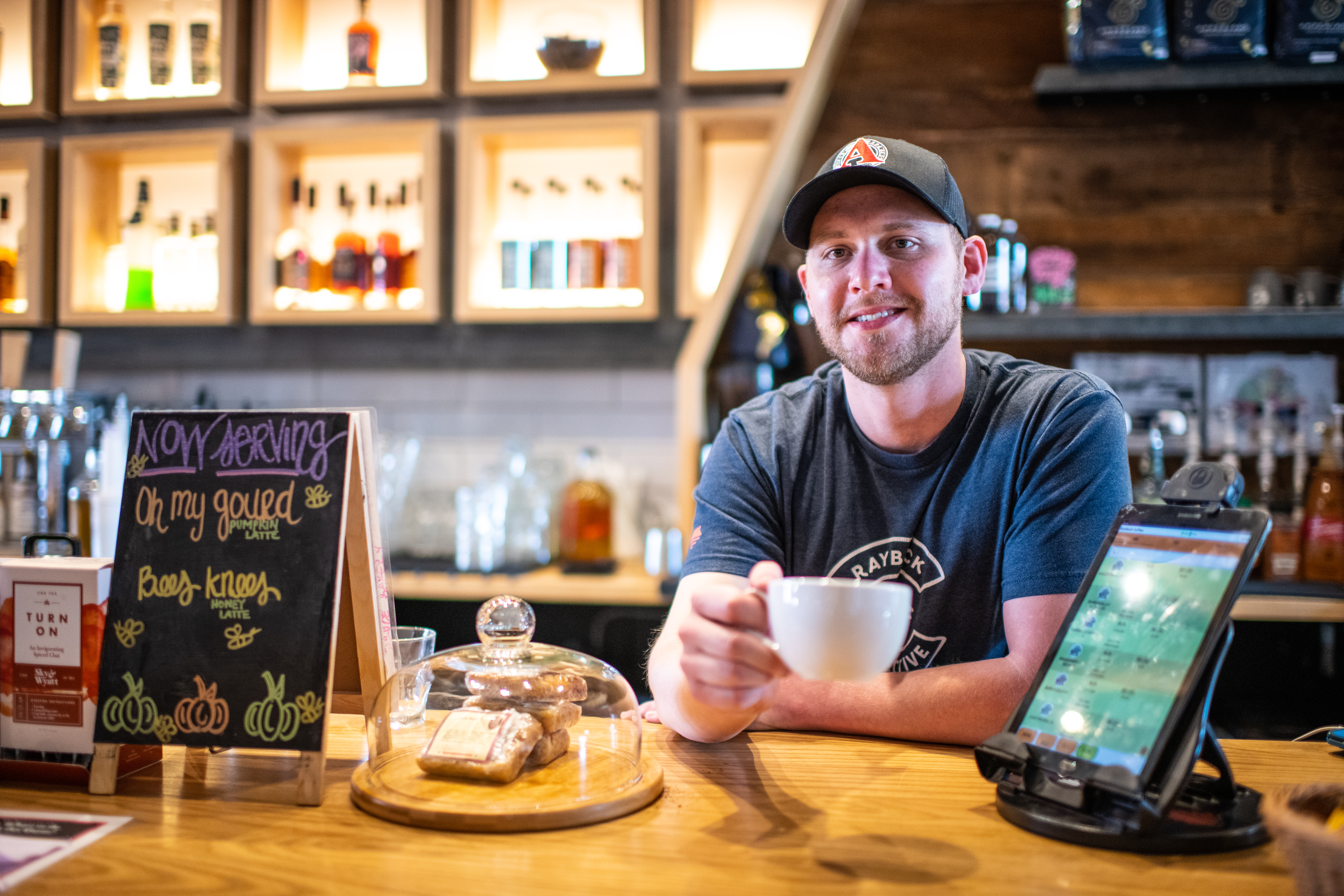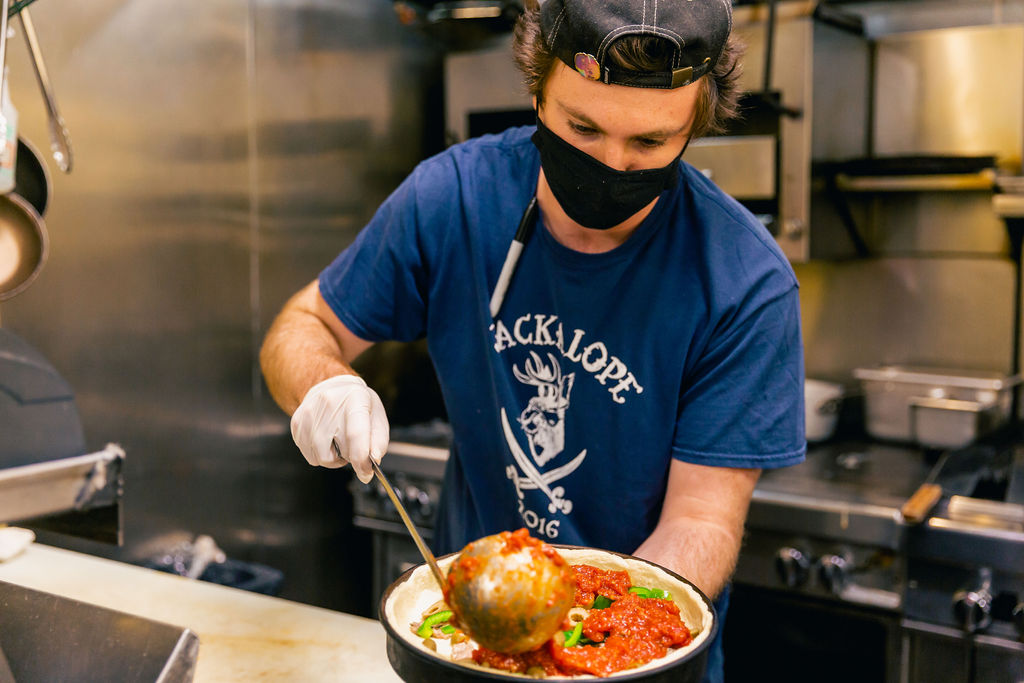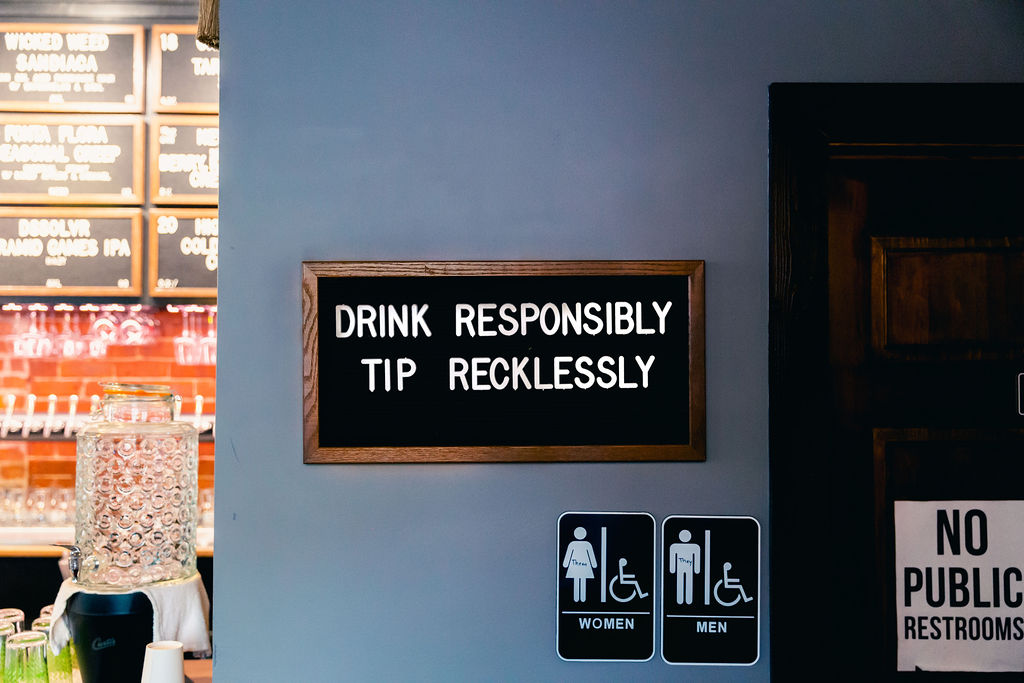The Tipping Culture Shift: Supplementing Staff Income—Plus, How A Bar & Restaurant POS System Can Help
There are tools from the best bar and restaurant POS system that make tipping out your employees much easier to manage.

The continued labor shortage and all of the other food and beverage woes—supply chain, inflation, climate change—have made it especially expensive to run a growing business. These community-building establishments can’t operate without their beloved staff members, but it’s getting more and more competitive to meet employee demands.
Because labor costs are arguably the largest expense for these establishments, owners have recently been forced to re-evaluate how they compensate employees. Let’s look at what avenues they’re turning to, and how a bar and restaurant POS system can support these efforts should you choose to do the same.
Tipped Employees & How Those Earnings Typically Get Split
In the United States, tipping food and beverage staff is a widely accepted systematic structure. Service employees not only expect to be tipped, but depend on it.
That’s because the US federal minimum wage is $2.13 per hour for tipped employees. And while state and local laws vary around tips, some regulations remain the same everywhere:
- A tipped employee is one that earns more than $30 per month in tips
- Non-tipped employees (typically back of house staff) must be paid at least the federal minimum wage: $7.25 per hour
- Tips are considered wages
- Employers have no legal right to any part of an employee’s tips
Now you may be wondering: Do servers only make $2.13 per hour on really slow days then? That’s where tip credits come in. Employers are required to pay that hourly $2.13 in direct wages on the basis that what their employee earns in tips will at least meet the federal minimum wage. That means if business is slow and a staff member’s hourly wages in addition to the tips they earned don’t come out to $7.25 per hour, the employer must make up the difference themselves.
Here’s an overview of different types of tipping structures that are popular in food and beverage:
- Tipping out: Staff who directly earn the tips keep them, unless they choose to share with team members that helped them.
Pro: This structure motivates bartenders and bussers to help servers out to the best of their abilities with the hopes of getting a portion of the tip.
Con: Leaving tip outs up to servers can lead to unequal distribution among team members.
- Tip splitting: Most prominently seen at fast casual restaurants or coffee shops, tip splitting is when all tips are split evenly by eligible employees. Think: tip jar!
Pro: With everyone on shift working for the same tips, this structure can inspire great teamwork.
Con: If any staff member slacks, the others pay for it—literally.
- Tip pooling: All tips go in one pool and are split evenly among those eligible based on hours worked or another agreed-upon division.
Pros: Pooling tends to create a positive teamwork mentality, results in equitable wages among both FOH and BOH staff, and retains kitchen staff at a higher rate.
Cons: Managing and dividing a tip pool requires a significant amount of spreadsheet work if employers don’t have the right bar and restaurant POS system supporting them.
Clearly, managing tipped employees and how tips are shared isn’t as simple as you may have thought. In addition to evaluating what’s best for your employees and for the guest experience, owners also must consider the type of business they run and abide by the laws unique to their location.
Rethinking The Tipping System
When businesses are busy and guests are generous, food and beverage employees have the potential to make the big bucks with tipping models. In fact, approximately $36.4 billion in tips is earned by tipped employees annually. But tipping culture isn’t perfect, and its existence has been a persistent debate in the US for years.
Tipping Inherently Leads To Pay Disparity Among Team Members
Unfortunately, as thoughtful as a tip model may be, there are many holes to poke in the practice as far as inequities:
- FOH and BOH staff: Chefs, dishwashers, and other BOH staff don’t always get recognized in tip shares, although their work directly impacts a guest’s experience, too.
- Tipped and non-tipped (salaried) staff: As staff climb the ladder at food and beverage spots, they often move out of tipped roles and into salaried positions. But on high volume tip nights, servers can easily make more than their managers since, in most areas, managers can’t legally participate in tip pools. This disincentivizes growth at a business.
- Minorities: Women, non-white folks, and the LGBTQ+ community are oftentimes forced to put up with harassment in order to avoid getting bad tips.

Wage Reliability Is An Increasing Necessity
We know that traffic as well as guest generosity play a big part in determining a tipped employee’s wage. In a nation with housing, healthcare, and grocery prices climbing, a stable wage is a bigger priority than ever for the working class.
The Smart Staffing Guide looks at more factors that have led to food and beverage employees demanding wage reliability, as well as other potential benefits in their compensation packages. You can read more about that here!
How A Bar & Restaurant POS System Supports Tip Models
“Tip pooling is often so complex it becomes a part-time job’s worth of work for managers,” says Riz Jiwan, the VP of Product at 7shifts, a restaurant scheduling software. If you’ve ever manually tackled a tip pooling spreadsheet, you probably agree. Luckily, there are tools from the best bar and restaurant POS system that make it much easier to manage.
Bar & Restaurant POS System Reports Streamline Tip Calculations
Of course, relying on digital solutions is a more time-efficient and accurate way of calculating and dividing a tip pool. With pre-built bar and restaurant POS system reports like the following, you can get the real-time sales and employee information you need to operate with a successful tip pool:
- Tips By Labor Hour: This report is great if you’re dividing tips by the employees’ hours worked. Create pools based on when people are clocking in and out.
- Employee Time Card: Ensure all tipped employees get their share of the pool without differentiating tips based on time of day or shift.
- Employee Performance: Identify who is bringing in the largest tabs and tips.
Bar & Restaurant POS System Tip Calculators
Specific to Arryved POS, the End of Day Tip Calculator lets you customize tipped hours. This comes in handy when the certain hours a staff member works doesn’t coincide with the hours they should get tips for, or when you need to add cash tips to the pool. Plus, the Arryved bar and restaurant POS system lets you edit any employee’s hours in case clock ins or outs are inaccurate.
Bar & Restaurant POS System Tip Allocation Customizations
Another custom feature courtesy of Arryved is the option to allocate tips based on the time an order is placed, versus when the tab is closed. This is helpful if a server or bartender clocks out while tables they served are still sitting. After all, since they started the tab, they should still get a portion of those tips!
This allocation is also used when a business chooses a role-based distribution method for their tip pool. Just manually adjust tip allocation as you see fit at the end of the night.
Service Fees Help Food & Beverage Business Pay Higher Wages
Now, what exactly is a service fee? Mollie Steinemann, the Colorado Restaurant Association’s manager of government affairs, defines it as “any non-discretionary charge added to a restaurant or bar customer’s bill, regardless of what it’s called.” That means hospitality fees, kitchen fees, and any other fee name you’ve seen on your bill recently.
Mollie continues: “Auto-gratuities fall into this category, as do things like health and wellness charges, back-of-house service charges, and anything else that a customer can’t opt into. Service charges are considered revenue and operators are required to collect sales tax on them.”
Service Fees Gained Popularity During COVID
For most, guests started noticing service fees when food and beverages spots were opening back up after the peak of the pandemic. Bars and restaurants were adding these pandemic surcharges to help pay for “personal protective equipment” such as masks, hand sanitizer, and takeout packaging. According to the National Restaurant Association, the additional safety measures that eateries had to put in place during the pandemic cost each business around $10,000 on average! And while these costly measures weren’t unique to the hospitality industry—dentistries, salons, and others had to cough up money to do the same—the necessary cleaning supplies were an expense many businesses weren’t prepared to pay.
Service fees are an additional form of revenue, so long as there’s a clear line item citing the charge on guests’ bills. The reason for the surcharge could be to replace tipping, add to BOH wages, or offset any increased expenses, which we know is highly applicable these days.
How Managing Service Fees Is Different Than Managing Tips
We now know that service fees are considered revenue, whereas tips are considered non-compulsory gifts from guests directly to staff. Therefore they’re treated much differently, although to guests the percentages are typically the same (15-20%).
But that’s not to say that staff aren’t directly benefiting from service fees. These fees often help owners pay higher hourly wages to their employees as well as pay for benefits like healthcare.
So what’s the difference? Control, according to Alex Seidel, a Denver chef and restaurant owner. With service fees, owners can dictate where those dollars go, whether it’s to give all staff members “livable wages” or help pay for the increased cost of ingredients. Tips, on the other hand, go directly in staff pockets.
Guests uncertain of whether tips are still expected or not should research individual restaurants. Sometimes, service fees are meant to replace tips altogether, but not always. When service fees are intended to supplement BOH wages or cover expenses, tips may still be expected for waitstaff. While some businesses make it clear what service fees are for, it’s not required, which is why tipping servers is a gray area for guests.
Because tips may still be collected, using a service fee model doesn’t necessarily mean that business owners must pay FOH staff a full minimum wage. They can still receive a tipped wage as long as enough tips are collected to meet the minimum wage.
That’s a significant benefit for owners: Service fees can increase BOH wages without eliminating the possibility of FOH staff making above minimum wage with their tips. Plus, they can use the service fees to pay managers and supervisors higher salaries and encourage professional growth, which was a concern we covered earlier with tipping models.
And while FOH staff may have a mixed response to service fees, there’s less pressure with this model to “turn and burn” in order to maximize tips.
How A Bar & Restaurant POS System Can Support Service Fee Models
Whether you’re transitioning into a service fee model or have already implemented one, the best bar and restaurant POS system can support you in communicating with guests and supporting staff.
A Bar & Restaurant POS System Helps Communicate Service Fees To Guests
Guests are less inclined to refute fees they know are coming, which is why communication regarding service fees is key. And trust us, you’d rather over communicate it than sour an experience by surprising them at the end with an added fee. Here are some recommended communication avenues:
- Social media: Guests likely interact with your brand here the most. Social media is a great place to be honest with your guests about why you’re implementing service fees, so don’t hold back. If they follow you online, they’re likely to support your business changes even if it means additional fees for them.
- Signage: Whether it’s a sign on the door or written next to the scannable QR code (supported by your bar and restaurant POS system!) on tables, it’s a good idea to have physical signage on premise.
- Menus: Because digital menus are so easy to update, this is a good place to communicate extra fees using your bar and restaurant POS system.
- Email loyalty members: They’re rewards members for a reason! Use your bar and restaurant POS system to email all your biggest fans about your new service fee model. Again, these people are likely to support your decision and your business, so just be honest!
- On the bill: This communication method shouldn’t be missed! You can have a written blurb right on the check, or a QR code link where guests can learn more.

A Bar & Restaurant POS System’s Savvy Tools Can Help Service More Guests With Less Staff
If you’re worried about service fees not stretching as far as tips when it comes to lining staffs’ pockets, there are several ways a bar and restaurant POS system can help you reduce the amount of labor needed on the floor. That way, each staff member can have a bigger cut of the service fee pie.
Here’s how you can streamline operations on the floor:
- Mobile technology: The best bar and restaurant POS system is fully mobile, meaning staff aren’t tied to one stationary terminal at the bar. This allows staff to move freely about the floor and service more guests.
- Contactless ordering: Empowering guests to order themselves using contactless ordering is yet another way to service more guests with less staff. Plus, QR code ordering has proven to increase tab size by 24% which means higher service fees are collected, too!
- Card on file: The best bar and restaurant POS system lets you start tabs without holding onto cards. This eliminates the tedious task of storing and retrieving cards from a rolodex, and encourages guests to keep their tabs open, ultimately growing their tab size!
Supporting Both Models: How A Bar & Restaurant POS System Reduces Labor Costs
Whichever model your business chooses to use, a bar and restaurant POS system can help reduce your biggest expense: labor. The most prominent way this technology does so is through advanced reporting.
Hour By Hour Reports Inform Efficient Staffing Schedules
When you understand your business’s behavior on an hourly basis—what you’re selling, your traffic, etc.—you can better staff. That way, you’re not losing money from overstaffing and not losing guest kudos from understaffing. Take a look at your bar and restaurant POS system’s hourly reports to see when your biggest rushes are, and schedule staff accordingly.
This kind of report also makes it easy to see where there are opportunities to improve processes. Establishing a baseline in sales based on what your bar or restaurant does on average in specific time frames helps you and your team understand how things are working, or how they aren’t.
The Rayback in Boulder, CO even uses this report as a motivational tool for their team. Because the best bar and restaurant POS system updates the reporting dashboard in real time, any team member with a login can see how the bar is performing at the drop of a hat. If someone notices the team is behind the week’s average, it motivates everyone to work more efficiently!
Employee-Specific Reports Also Inform Staffing Schedules
The right bar and restaurant POS system will also provide you with employee-specific reports like the following:
- Employee Performance Report: Sure, this is helpful to see which staff is bringing in the highest tabs or tips. But it also identifies who exceeds at certain roles. Perhaps a team member does an excellent job of educating guests at the bar, and therefore drives up bar tabs. Or, a particular team member communicates the best between BOH and FOH staff, and therefore runs plates faster than anyone else. This report helps you staff members in the roles where they shine the brightest.
- Labor Hour Reports: Reports from the best bar and restaurant POS system include Time Card Summary, Tips by Hours, Tips by Labor Hours, and more. Plus, you can export the data to your HR software. Automating this information not only saves you and your supervising team time, it also gives you a transparent comparison at each individual’s hours and wages.
Both of these employee-focused reports can help you increase staff productivity and satisfaction.
Retention Is The Best Way To Save On Labor Costs
In the current staffing climate, most know that good employees are harder to find and, oftentimes, even harder to keep. The Smart Staffing Guide helps business owners understand how good training—on both process and culture—goes a long way in keeping staff happy and efficient in the long term.
Speaking of long term success, having smart technology on your side sets your team and business up for growth. The most trusted bar and restaurant POS system is Arryved POS because of its attention to not only business operations and guest experiences, but intelligent staffing tools, too.
Just like any other business, labor is probably one of the biggest expenses and biggest factors of cost and profitability. We’re hyper focused on labor. Our front of the house team benefits from that hyper focus because we want to make sure they’re maximizing their ability to make as much money as possible, while of course not compromising the customer experience.
-Mel Timm, General Manager of The Rayback, regarding their use of Arryved’s staff-related reports
Request a free, custom demo of Arryved and see how you can begin optimizing your staffing today!
